In May 2021 the Haunted Attraction Association announced a 3-year plan to support and strengthen the haunted attractions industry. The HAA aimed to use a three-pronged strategy of “protect, promote, educate” to better serve its members and the industry.
Scott Swenson spoke with Spencer Terry from Fear Factory in Salt Lake City, the new president for the Haunted Attraction Association, in episode 59 of A Scott in the Dark. They discussed the impetus for the new direction, the coming changes to the HAA, and the current state of the industry. Read excerpts from the interview below.
Listen Now:
Scott: “Here we are once again in the dark, or more accurately, for this particular show, coming out of the dark, because in this very special episode, we are trying to illuminate and draw a specific spotlight on something that has just recently happened that I think is super cool. This is a really unusual episode for me, because first off, I’m not alone, and secondly, we’re talking about things much larger than just one little topic – we’re talking about a gigantic topic with my very special guest, Spencer Terry from Fear Factory in Salt Lake City. He’s not here to talk about Fear Factory, even though that’s what all of his logos say. Oh, he’ll talk about Fear Factory too, but that’s OK. He’s really here as the new president for the Haunted Attraction Association.”

The Decision to Implement Changes
Scott: “The Haunted Attraction Association has within the last few days made some really big announcements and released some pretty big stuff. For those of you who are not familiar with the Haunted Attraction Association, where have you been? Hello, wake up people! In all honesty, if you are not a member you should be because there are great benefits. And what I’m really excited to talk about on this particular show is how those benefits are going to improve over the next three years.
I think the first question I have, Spencer, is, Why? Why the improvement? It’s one of those situations where, in this industry, if it ain’t broke, don’t fix it, because you know we’re going to have to fix it five times during the season anyway. So what prompted you, the new President, and the other members of the board to make these kinds of sweeping changes and plans? We’ll get into the details later, but the first question is why?”
Spencer: “Honestly, I think it’s two-part. One is that we knew as a board COVID really forced us all to focus on our operations locally, and in doing that we were all in survival mode. Almost all of us were so focused on what was happening on the ground in our own local market we didn’t put as much emphasis on the national market. As board members that’s one of the things that we need to be doing more. How do we get resources out? And we did some really great things. We did a lobbying effort, Fear Factory put out that the COVID contingency plan, and we put some other things together, but we could have done more and we’ve always felt that we could be doing more.
So we started off by doing a three-part survey as board members. We did an internal survey, then we sent a survey out for members, and then a survey out to the entire industry. The internal one for us as board members was very revealing – it pretty much said we want to do more. We think we have the capacity to do more, we just need some direction and we need a few extra people to help us get this ball moving. It allowed us to really think more about how do we make our industry better in general? By looking at the Members and the industry surveys, it was very clear people didn’t hear from HAA enough. The member ROI – I mean, let’s be honest, you know your return on investment should always be two or three times what you’re paying back as a member, and for the last few years, it really hasn’t. We recognize that there’s a lot of really big macro things that happen: we have a crisis plan, we’ve got PR campaigns, the National PR campaign that works really well. But as far as hands-on tangible takeaways for members, there just really weren’t a lot, and so we’re building a whole 70 point plan. We’re really at that place now of saying ‘how do we take care of our industry, take care of our Members, and just blow this industry out of the water? How do we come back from COVID 10 times stronger?’ So, that’s where a lot of this effort is coming from. It’s certainly not just me, it’s our entire board that’s kind of raising this up from the ground and pushing full speed ahead, so we’re pretty excited.”
Scott: “Now you see why I’m so excited to have Spencer on the show because if you’ve ever listened to the show before you’ve heard me say at least once, when the tide comes in, all ships rise. It’s all about elevating the industry because that really is what is going to help us all.”
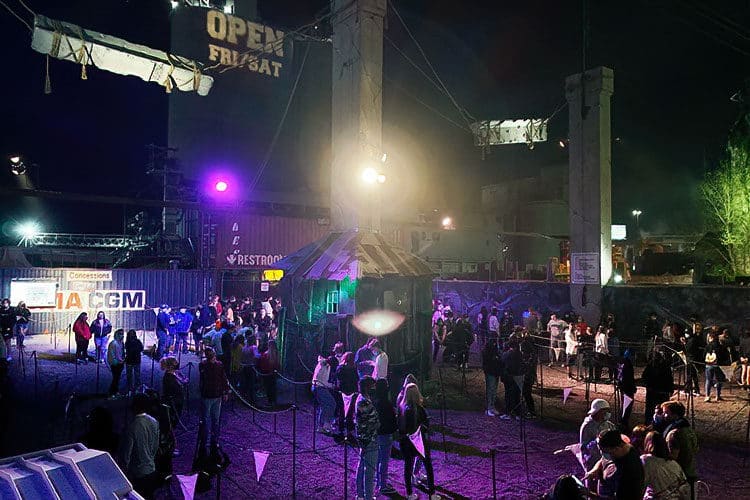
Shifting a Culture within the HAA
Scott: So, now these surveys. One of the things that I was really appreciative of was the fact that the board was so open and honest to admit ‘we ain’t doing A-plus work here’ – and I’m not trying to be negative. To me, that’s a strong positive. That’s a board taking responsibility for what they have or haven’t done, and that’s the first step to growth. Was there any pushback from the board when you were going to release that information that the surveys weren’t polished and stellar?”
Spencer: “Zero. I think we’re all on the same page at this point: that we’re gangbusters, we’re going to push this 150%. We’re on the board because we personally want to make a difference professionally. If we help out the entire nation, we help our local market. It’s all about ships rising, right? And so I think all of us collectively are on the board to serve. We’re elected by members. Essentially, if the members aren’t happy, quite frankly, we all need to get our ass kicked and we need to be off the board if we’re not doing our work. This has also allowed the board to really be able to stand up and say, ‘I don’t have expertise in B & D, but I’ve got expertise in A, C, & F that I can rock all day long and I’m happy to be a consultant for that.’ In fact we’ve even just talked about it as board members, that some of us are going to actually be jumping on in the next week or so to make our own two or five minute video about why this is important for us. Why HAA 2.0, this kind of three-year strategic plan, is important for us professionally and personally – how we believe this is going to help shift our industry.
Personally, for me, we’re not trying to change an industry, we’re really trying to shift a culture. As we all know, culture is probably by far one of the hardest things to A) change and B) measure, but we’re going to do it. We’ll figure out ways that we can do it based off of what Members are telling us, what the industry needs, what vendors need, what buyers need, what we need operationally, what we need financially, and pulling all of those things together. This is one of the things that we also talked about as a board: although we’re elected because we may have a little bit of extra time, we have a million irons in the fire and HAA has grown to the point where you’ve got to have someone who has a little bit more extra time. You know I’m the GM and I’m a part equity owner here at Fear Factory, but I’m also able to spend an extra 5 or 10 hours a week because it’s not a second priority or a third priority. Same with Cody Bailey from Hush Haunted House who’s up in Michigan. We’re all willing to put in a little extra effort, and it’s already happening, we’re already seeing that.
We recognize we’re not the experts either. That’s why we’re bringing these advisory committees, so that even though we may be able to collectively have 90% of the information and/or we know who to get people to. There’s also a lot of members out there who know their stuff. That’s why we’re bringing on a Marketing Advisory Council. It’s why we’re bringing on a committee specifically for legal consult – just so that people have resources. It may not be all of us, but there is an entire industry willing and able, so we might as well utilize it.”
Scott: “That’s great. I don’t want anybody to think that this change, this bold move forward, is in any way reflecting negatively on past leadership or on past incarnations of organizations similar to the Haunted Attraction Association. Those of you who are my age or older know exactly what I’m talking about. I’ve been members of those and I’ve been a member of HAA since it started, and you’re absolutely right. I think there are years where you kind of go, ‘I’m a member because I want to keep it on my website that I’m a member,’ but that was about the only thing I was getting out of it – and a cool shirt every now and then. But the truth of the matter is that’s not enough reason for an organization like Haunted Attraction Association to exist. It’s a nice brag tag, but it certainly does not have – to use your term exactly – the ROI that you’re looking for.”
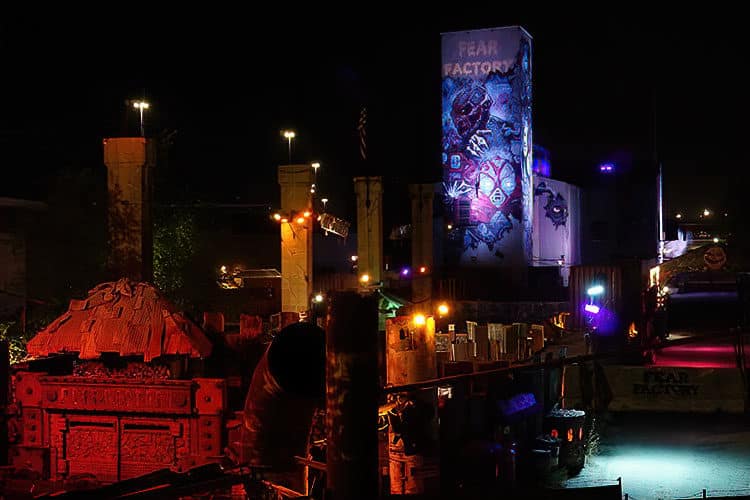
Building a Foundation from 3 Pillars
Scott: “Before we dive into the nuts and bolts of what the plan entails, let’s take a half step back and talk a little bit about the pillars of HAA: Protect, Promote, and Educate. I love it when organizations have simple pillars that people can actually remember, even old guys like me. How did that act as a springboard for this three-year plan of change?”
Spencer: “That was completely on purpose. I certainly won’t say I’m an expert in building strategic plans, but I’ve now built five or six of them for corporations. As I looked at what I learned through each of those processes, the reality is exactly just that: if it’s not simple, it’s not going to work.
So what we did is, we essentially took all this data from the board members as well as from all of our internal HAA current Members, and then we did an entire industry-wide survey. We took all that data, brought it all together, aggregated what we thought was important, and really started to look for trends and just basic common denominators. We took our entire board of directors and I asked for half of the board to be on the steering committee, because it really needs to be at least 50% of the board who’s willing to steer us in this new direction. Through that steering committee, I then asked everyone to read through the data and to write down which of those three pillars they thought some of these suggestions, ideas, and failures fell under. I wanted to use those three as a strategic screen. I wanted to be able to take all this data and put it through this filter, and whatever comes at the bottom, I can stack it in these three pillars, and that’s going to help us build the house.
It worked out really, really well. It’s allowed us to not only be able to clearly define goals, but I think it’s also allowing us to not get too far ahead of the cart. It’s really easy in something like this. I mean, there’s 70 points on this new plan. I think of the 70, about 15 of them are currently in motion, and we’ve got 20 that we want to have in motion in the next six months, right after post-2021 fall. So there’s a lot to bite off, and everyone has grand ideas about ‘hey, you know why don’t we do this, or do that?’ Cool, bring it back into that strategic screen, into that plan, and if it’s not one of these three things that we currently have, let’s parking lot it. If we can get it in later on, we will, but we’ve got to focus on what we have now.”
Scott: “Well, and there’s no point in rebuilding a foundation. You’ve got the foundation there. If you’ve got a foundation, you’ve got 3/4 of your job done. All you have to do is put walls up then. It’s one of those situations where if you can build off of these three pillars, then you’re not going back to square one, you’re not going back to the dark ages of haunt. You’re taking everything all of the past leaders, past members have contributed and now moving it forward.
I think that it’s very interesting when you said that COVID and the pandemic was kind of an impetus for this. The businesses that still survive right now, and I’m not even just talking haunt, are the ones who recognized, ‘you know what? We needed to be doing some of this before COVID’, and they’re implementing it quickly, now. I said COVID didn’t really change anything other than accelerating time. The companies that are gone now are companies that would have been gone in three to five years anyway, because they weren’t particularly sturdy or stable.”
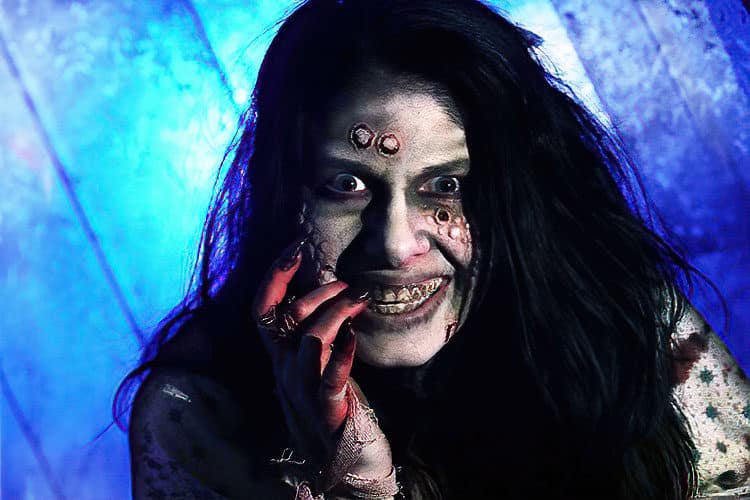
Expanding Educational Resources
Scott: “So, we’ve started like macro, and now we’ve gone through a couple of funnels here and things went down through to Protect, Promote, and Educate. You’ve got your pillars, but you also have your action items so that you can kind of break those out. You’ve got 70 different points, but I’m sure you’ve broken those into smaller manageable chunks. What needs work? What needs the laser focus right now?”
Spencer: “The 70 points are all drilled down, so those are all action items. We can certainly talk about education. Technology is fantastic and at this point where we are, I feel like we can be doing more to give back to our Members. It doesn’t have to necessarily be education-specific like an actual class where there’s curricula and goals, but that’s also coming. We just want to be able to connect people and make sure that they have mixers & networking opportunities, they’re able to do the things that they could be doing in a conference, but we want to be able to virtually give them a chance to do that now, because that way they have an entire year to be able to keep working on resources. So we’re looking at ways that we can just better support through education efforts, both on the networking side but also looking further, at 2022, 2023 to be able to actually build a curricula that’s going to be measurable and that we can sustain.
For example, how do we do national trend baseline foundation training for actors that all actors in the entire country can take? That way, let’s say I’m an actor here at Fear Factory and I walk out the door, my family moves to Pennsylvania, I walk into a haunted Pennsylvania and say ‘hey, what’s up? I’m Haunted Attraction Association trained as an actor’, and immediately that operator knows exactly what I’ve been trained on and what I’m certified on. So there’s a whole bunch of things that are coming down the pipe that we’re looking at.
How do we do that better? Even on the education side, something as easy as just partnering with resources, like Homeland Security. Cody Bailey from Hush Haunted House, our VP, is working on building a new resource library that consolidates down a bunch of different guides so we can better educate our operators on active shooter scenarios, crowded places, all of those different things that are going to take time to learn. Also, look at look at HR. That’s another area for learning in education – not a lot of haunted attractions have an HR consultant.”
Scott: “Theme, parks, museums, zoos, that kind of thing, they already have a human resources department. I have not worked for a single independent haunt that actually has anyone who really knows when it comes to training, when it comes to harassment in the workplace, when it comes to any of those issues that can cost haunt owners big bucks. You have one sexual harassment case and it can close your doors. So, I think that’s super smart.”
Spencer: “Those are all the things that are coming. You’re right, I have found that we don’t have anyone really representing HR. My background is in business, in HR, and so as I’m talking to other haunted houses, I’m like ‘wait a minute, what do you do or who do you have?’ So we’re working on some resources for that. Some of it is resource-driven, some of it is going to be online group-driven, some of it is just going to be personal education.”
Scott: “Going back to the state of the industry, I believe you said the thing that everybody thought was spot on and was working the way it should was the CHAOS training. What you’ve just described is basically CHAOS for actors, which in my opinion is actors all the time – because it’s always a state of chaos. That’s where my passion lies when it comes to the haunt industry, because I always say, ‘give me three good actors and a candle and I can scare the crap out of you.’ So I’m all about good, strong actor training, and I love the idea of that sort of certification mentality so that you know the traveling haunt actors can basically show their card and get in.
What I really think is important with that, is not just what it trains the actors to do, but also to kind of tie it over to the haunt owners so that they have less risk. I don’t know how they want to handle it, but I don’t want haunted owners to sit back and go, ‘that has nothing to do with me.’ Because it does, there’s a lot to do with you, and in fact, the majority of people working for you are actors. Let’s just be honest, it’s the haunt industry.
Recently I’ve had the opportunity to be an SME – Subject Matter Expert – for some of the IAAPA certifications that they’re doing, and I’ve been contributing and working with several different certifications. The nice thing about that is, once people see certain IAPPA certifications they recognize that, and then this person gets a second look. I think CHAOS can be elevated to that level, even more so, and I think that developing the actor version of it, that would be really good.”
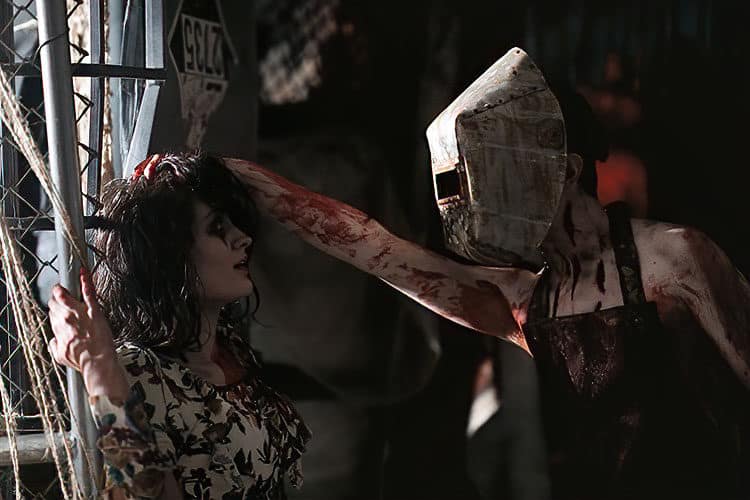
Networking & Creating Relevant Tracks
Scott: When you talk about networking in the haunt industry, it’s such a mixed bag. It’s a broad demographic, and I assume that the membership of Haunted Attraction Association looks just as mottled. You’ve got haunt owners on one end – you’ve got corporate haunters, you’ve got home haunters. You’ve got haunt actors who never even thought about owning they just like to put on a mask and go ‘boo.’ You’ve got makeup artists. You’ve got technicians. How is it that you’re going to be able to create the networking, the balance of the education, and the resources that are going to be able to address the needs of so many? It seems like herding cats to me.
Spencer: I feel exactly that same way. So one of your questions about what was not working, we can go back to that for a second. For a long time HAA has been really focused on owner/operator benefit. The owners are the ones that are paying for these memberships, so they’re the ones who should be getting the benefits. What most people didn’t know is that we have an individual membership. It’s 50 bucks for any actor, build, tech, safety, security, makeup, anyone can be in that space. So what we’re doing is we’re really splitting these 2 tracks. So there are going to be specific, relevant benefits, resources, guides, and content for owners and operators. Obviously, this actor class is going to be one of them. But looking at how there’s going to be these two different tracks, owners and actors/staff, and from there that’s how we’re going to filter out some of these things.
So take for example, a mixer. We want to be able to have actors, and eventually, we’re going to get to a place where I would really love to see some regional trainings, like physical trainings. By 2023, I would love to be able to figure out how monetarily we can do it, where we can regionally support local haunted houses and do a physical training, but until then we’re going to use technology. To be able to have these mixers, let’s say if you’re an operator – we run 65,000 people through our property within 28 days. That’s going to be vastly different from a nonprofit haunted house that’s pushing 2000 or 5000 people through. There are certainly some similarities where our needs are going to match up, but for the most part it’s two different scales. So we want to be able to create these mixers where we have two, maybe even three tiers that are attendance based – zero to 10,000, 10,000 to 30,000, and 30,000 above – so we can have content, relevant conversations, networking, and connect all the dots. On the actor side, same thing. We haven’t figured out how we’re going to break this up yet, this is part of what this advisory committee is going to be for: to look at how we support what actors are going to need. There are things that I would like to do, whether we have a formalized actor or operator training, yet, there’s content we can be talking about now, and at least get people thinking about it.”
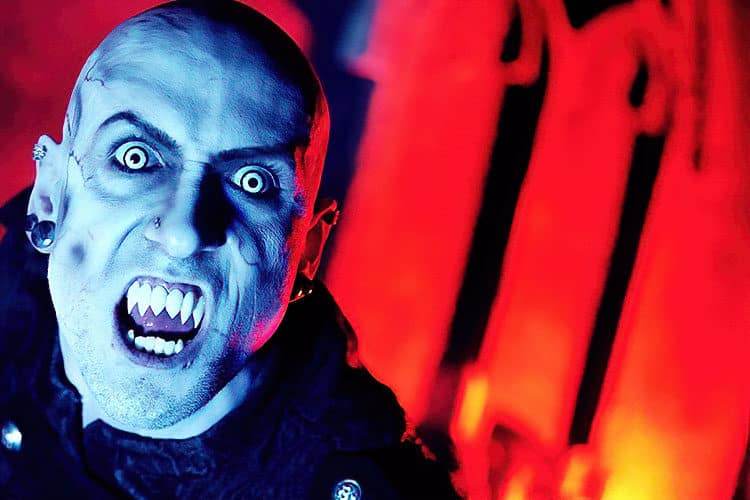
The Market is Changing
Spencer: When we look at how our local market, our national market, the global market is changing, our customers are changing. The consumer index is certainly shifting. What I even see out here, our customers don’t look the same. They don’t talk the same. They don’t act the same as they did even five years ago. I’ll say this right now: your consumers are changing, your staff is changing, and if you’re not changing, I’ll get the shovel ready. I don’t want to see any haunted house go under because they’re not prepared. We have the people, we have the skills to be prepared, to help people on diversity, inclusion, to look at financials and budgeting, to look at strategic marketing effects, to look at sexual harassment and legal protection. Those are all things that we can be having a conversation and learning about collectively now. We need to do it. So, those are ways that we can help support our industry, both on the operator and on the actor side. It makes sense.”
Scott: “It’s funny because even most of my clients – the majority of them fall into I will say the theme park or the attraction realm – who are doing Halloween, their expectations are changing. Certain areas are becoming more under the microscope and other areas are becoming a bit more lax. It’s very unique. We can always say it’s pandemic based and it turned the world upside down and kind of shook things up, but the truth of the matter is there’s always going to be change. There is always going to be change, and if you are not planning parallel paths moving forward to something new and something different, you’re going to be left behind.
Things are moving so much faster now. Like 10 years ago, if you had a big old barn, some fire retardant, some great stuff, and some duct tape, you could probably do a pretty decent haunt. That’s not an option anymore, and it’s not an option for several reasons. It’s not an option because it’s no longer safe to do it without some sort of regulation – and you probably won’t be able to open. It’s probably not going to happen because guest expectation is higher. It’s probably not going to happen because you’re not going to be able to get the seed money to get it all started to begin with.”
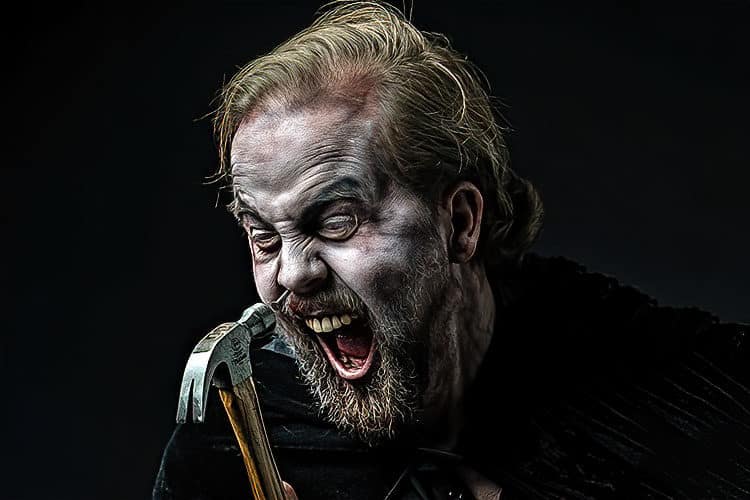
The Strategy Behind the 3-Year Plan
Scott: “We’ve talked about all this stuff and all these action items, and I know there’s a plan for it. You’ve mentioned a three-year plan. How did you decide what was in what year? Does each year have a specific focus, or are you trying to dip into all three or four or five areas that you talked about? What’s the strategy behind the three-year plan?”
Spencer: “I think that actually took a lot of precision-based focus on how we took all that data and really filtered it through. Rather than starting at the bottom and working up, we almost had to start at the top and work down. I think that came from us, as board members, thinking about what were we able to really strategically focus on while looking through this lens of what Members and the industry are they saying they need. Then do we currently have the skills to do that, and if so, let’s get it done in the next year, maybe a year and a half. If we don’t have the skills, let’s put that on year and a half to two years so that we can find the right people.
A really good example of this is the legal advisory team. A lot of people – and myself included when I was a home haunter and later when I ran a nonprofit haunted house – would have given gold to have legal counsel available to me that I could just pick up the phone and be like ‘hey, some guy says that he just tripped over a rope and now he’s going to sue us, what do I do?’ Even just to have one person that I could have called. Now hearing how important that was still to people today, that was something where I’m like, ‘we only have one lawyer on our board currently, but we’ve got a decent number of lawyers out there in our space.’ So we put an all-call out and said, ‘listen, here’s the areas that we’re interested in, if you would like to help us if you feel like you have the skill set for it, send us a resume. We’d love to look at you if you’re in the industry, how long have you been in here? What are you doing?’ We don’t just have strangers, there’s many people who actually know the industry. We vetted those folks and so we now have a legal advisory team. It’s got five people on it, they’re all lawyers. Some have anything from family law to intellectual property – it’s just a cross-section.
Same thing on our marketing committee. People said that one of the things they needed the most help with was marketing. So we built a marketing advisory committee that’s a little bit of social media, it’s a little bit of professional marketing, it’s actual media people, it’s Google Analytics People who read data. We’re bringing all these people together to be able to have several different marketing-specific videos. Some of it’s going to be really specific, others are going to be very broad, just to really get people thinking more about it. But more importantly, is all members know that this is someone that they can reach out to and say ‘hey, can I pick your brain for five seconds? Am I on point? Am I not on point? I can’t break the algorithm code, help me out’, and they may have some insight that’s going to help. I think for attractions that are in the 5000 to 20,000 range, that’s going to be really beneficial. Even for smaller ones, even for home haunts – it’s going to be beneficial. So, that’s a really good example of how we had to look into 2022 to 2023 and 2023 plus.
We already have things that we’re putting on that 2023 burner that if we can get done with this content in the first two years we’re going to really start hacking some of that out. So we’ll see where we go. I think that’s where the more members that we have, certainly membership money, let’s not lie, I mean finances are finances. The more money we have, the more we can do. How we’re able to bring that in will be important, but quite frankly I feel like a lot of people are probably going to wait it out a couple of months and just see if HAA is really going to do what we say we’re going to do, and I think by fall we’ll have some pretty good resources out there. People will hopefully have a great successful year, and at the end of that year they’ll feel comfortable bringing some of that money back to us, and we’ll reinvest that back into the industry and keep running full speed.”

Legal Advisory Board
Scott: “Let me just clarify this, you have now a legal Advisory Board of not just lawyers – because many of them know nothing about the Haunted attraction industry or the attractions industry in general – but you have a group of lawyers who know things about the haunt industry, who are familiar with the haunt industry, and understand the legal ins and outs. Because let’s face it, law is very complex and there are very rarely straightforward direct answers to anything. Which is why I think it usually costs so much when we try to hire a lawyer. But as a member, members now have access to this brain trust of experienced lawyers. That’s worth membership alone!”
Spencer: “Right, I know. So if you were to pick up the phone right now in your state and call a lawyer, an hour is probably going to be 500 bucks minimum. I would like every single member, every year to have a 15 minute free consult where they essentially can just go and say ‘hey I need some direction. Do I even need Council or do I tell these people to go to hell? What do I do and how do I do it?’ If anything, at least the legal folks can say, ‘I do think that there may be a concern for you. You need to move in this direction, or at least give them some options.’
I think that’s the hardest part is that first phone call, and at least that saves people 200 bucks or 150 bucks, and yeah, you’re right, your membership is free at that point. Every single year that clock starts over. Each member has 15 minutes just to check in. I think some people will use it. Some people may not use it. We have our own legal counsel [at Fear Factory] but, I’m going to certainly call a friend if I if I can – because the friend knows my industry better than someone who doesn’t.”
Scott: “Right, and even if you do have legal counsel, just to pick up the phone and say, ‘OK, here’s what my lawyers are saying, but I don’t think I understand this part, can you explain it to me because they can’t?’ I still get into those confusions of: how different does it need to be, and how long do I have to wait? When you say something is in public domain, but how can I use it? Makes my head hurt. But it’s great to now be able to have access to a bunch of folks who are industry familiar and can certainly ask answer those questions. I’m kind of looking at it as it’s sort of like Siri. You know when you’re lost and you ask Siri for directions, Siri will point you in the right direction, lead you there. It isn’t going to drive your car, but it’s certainly going to point you in the right direction.
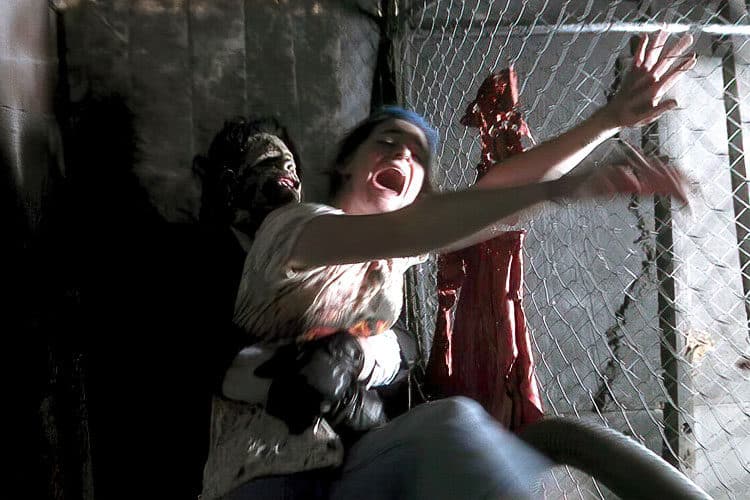
Measuring the Success of the Program
Scott: All right, so you’ve got all these grand plans. You’ve got this living breathing three year-ish document. What plans do you and the board have to measure the success or the level of success that this project is going to have?
Spencer: I think a lot of times everyone says, ‘let’s talk about all this cool stuff’, but we don’t get a chance to talk as much about the accountability. We’ve built in a completely transparent accountability component to this. Not going to lie, this is actually board Member driven. So let me use Allen Hobbs for an example. Allen is from Texas down in Dark Tower. He had this really great idea and said, ‘Why aren’t we all part of a Facebook group so that Members can reach out to us? Because right now, if you’re a new member, how do you know how to reach out to a board member? Who are the board? You really don’t know.’ That got me thinking more about transparency in general. I feel like even though we are elected by Members, the Members don’t necessarily know how to contact us. So one of the things that we did is we built an accountability measure that looks at essentially every single year. We just released the state of the industry from Transworld about this whole 3 year plan. We’re going to be in the same room, same chairs this time next year. I told the whole board, ‘let’s put this entire plan together, but at the end of the day, we are the ones that are going to be up on that stage, and we’re the ones that have to look people in the eyes and say sorry we failed.’ It is not an option, and so that’s why we were really careful about making sure that this year one, year two, year three were not only realistic, but we had the structure in place to be able to do it, and if we didn’t have the structure, or didn’t think we could build the structure, it went to year two or year 3. I feel pretty darn confident about this. The board is really passionate about making it happen.
You know we haven’t even talked about how we’re shifting completely to change and support vendors more in our industry – not just on the Member side of operators and actors, or staff, but vendors. So there’s a lot that’s going to be coming, and we as a board, we’re certainly accountable. All the people on the advisory committees are going to be signing a couple of documents, and one of them is this accountability component that you’re volunteering, but we need your help to ensure we’re getting X things done. If it’s five hours a month, great, thank you for volunteering your five hours a month, your time, talent, treasure is vital to us, but we have things to do. They need to get done.
Within 30 days we have already built two complete advisory committees. We’ve already built this really cool sustainability component. As board members, we’re actually rating ourselves on our own expertise for like 30 different points of the industry from how good is your expertise on nonprofit operations, to marketing, to legal analysis, and we’re putting a low, medium and high so as an entire board we can look at ourselves and say ‘holy crap, look like we have no representation of this area, we need that.’
I hear a lot of times, people tell us things like, ‘well, you need a home haunters that are on your board.’ I agree, I think what most of us forget is that 80% of us were, once upon a time, home haunters. At the same time I also want to make sure that we have an advisory committee for people who are currently home haunters. Or maybe you’re a completely new business and you’re like, ‘I don’t know if I’m going to get into this crazy industry or not, but I’d really like to.’ Cool, I want to be able to build an advisory committee so we can help people along that path. I would rather people start on the right foot and start on the right safe foot so that they don’t lose those. There’s nothing worse than pouring, $2000 of your home haunt into a professional haunt only to have their fire marshals show up and be like, ‘absolutely not’. Any way that we can help people make the right choices and do things the right way up front, we will.”

Sustainability of the Plan
Scott: You mentioned sustainability. We are still in the first month of this, everybody is burning hot, everybody is excited about it – especially the board. I’m glad to hear you use the words, ‘we have a sustainability model,’ because sustaining just the enthusiasm over the next three years is going to be challenging – especially when you hit those brick walls.
You also mentioned that there may be some folks sitting out there going, “Yeah, I’m not a member yet. I’ll give it two months, see what’s going on.” I’m going to actually flip that up. If you’re not a member, and this sounds like it makes sense, show your support now, because that’s going to continue to push this board. Because I know a lot of members of the board and it’s going to push the board to say, ‘oh look, our membership is up, and it’s up with the individual folks, and that means that what we’re saying is resonating.’ Use your wallet to show your support, because it will come back to you.
By becoming a member or renewing your membership to Haunted Attraction Association, you are not putting money in Spencer’s pocket, you’re not putting money in the boards pocket. What you’re doing is you’re putting money back in your own pocket. It is not about who’s going to profit off of this organization, because it sure as hell isn’t the people doing the work. It’s the people who are reaping the benefits of the work. If you just think about it from dollars and cents standpoint, the money that you invest will come back to you, even if half of this stuff is done. The other side of it is, take advantage of it. Know that it’s there.”

Involving the Community
Scott: “You know I can’t sit here and say, ‘I think absolutely everything here is going to work and it’s going to be all rosy, and it’s all going to be perfect and wonderful.’ What I will say is thank you as an organization for taking this on. Thank you for making this effort. Thank you for trying to herd the cats that are the haunt community and trying to offer options and opportunities. It is really easy for someone to say, ‘we’ll see.’ It’s much more rewarding for them to say, ‘great, I can help by doing this.’ If you know a board member on Haunted Attraction Association and you want to help out, can they contact you guys and say hey I want to help?”
Spencer: Anytime. Part of this is how do we as a board also get out there more? To your point, I think a really good example: in the past member money has paid for board member shirts. This is a really easy one for me. That stopped. We all made a vow that Members should not be paying for those. If you’re a board member, you can afford 25 bucks to buy your own shirt. Those are the small little things that we’re changing, where literally every penny we want to go back into our industry, back to our Members, back to content that can be used in operations that is going to bring these ships up on a higher level.
Scott: “The more that you’re able to involve vendors, the more that vendors will be willing to help you out with, not necessarily monetary donation, but certainly product donations and their product donations. You’ve been doing it to a certain extent with the auctions and that sort of thing, but I think that can help elevate everything from the Oscares to your shirts. I think that we have to help each other out, and if these guys are going to make the effort – whether you agree with 100% of the stuff or not, they’re making the effort – and if you’re not able to meet or exceed the effort that they’re putting into this then you might as well get on board and try to help out.
So if people do want to become either a member or want to learn more about this plan currently, what is the best way to learn more about the organization or to go ahead and become a member or renew your membership?”
Spencer: Let’s do learning first because I agree, I think the more people learn about what we’re doing, the more they’ll realize ‘holy crap, this ROI! I put in this much but I’m getting this much. This makes sense.’ So please, dig into it, learn more about it. The entire 50 minute video that drills down exactly what we’re planning on doing is currently on Facebook, we just launched it yesterday on the 5th of June. It’s on our Facebook page Haunted Attraction Association. You can learn more about it. Also the Haunted Attraction Network, Philip Hernandez and his team did a phenomenal job of boiling that 50 minute idea and boiled it down to about 20 minutes, it’s great.
From there, if you feel good about it or if you don’t, if you want to do more, reach out to us as a board. You can go to our website which is hauntedattractionassociation.com, click on board members, there’s a list of us that are there. Our photos are on there. If you don’t know any of us, send us a message, send me a message, I’m happy to be like, ‘hey, what’s up? What can I help you with?’ And if not I can catch you the right people. Our board is phenomenal. It’s the reason why we have this plan. It’s the reason why they care about this industry. This is a lifelong passion goal of us personally and professionally, and so there really is a lot of personal investment into leaving a legacy for the next decade or longer that this industry can kind of ride on. Pretty soon we’ll also be posting the PowerPoint itself so that you can actually see the PowerPoint, but for right now, most people are saying that it’s nice to see the PowerPoint and to see the discussion and the meanings rather than just seeing some blank slides without knowing all the content.
If you’re a current member, just know that you’re going to be getting more content. You’re going to be getting some emails and some Scream-Zines, which is our internal members-only magazine. That content is going to help us get ready for this push and make sure that everyone has access to the Facebook group into this content that we run rolling out so.
Thanks Scott for helping bang the drum and being as cool as you are and helping really just kind of uplift everything.”
